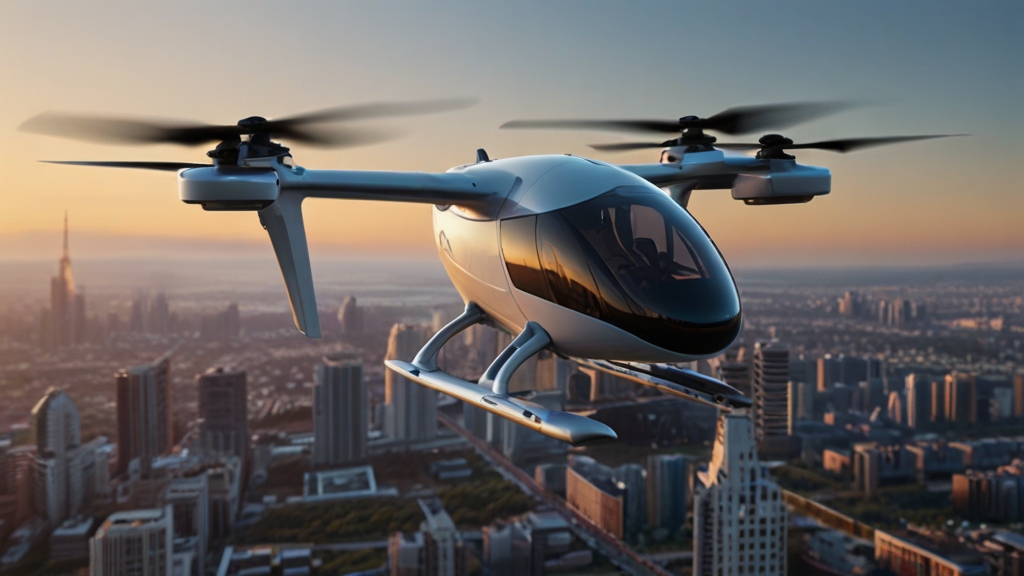Urban Air Mobility (UAM) represents a transformative vision for urban transportation, leveraging advanced aviation technologies to offer a more efficient, sustainable, and comfortable means of travel within cities. At the heart of UAM are electric vertical takeoff and landing (eVTOL) aircrafts which enable rapid and direct routes through urban airspace.
These aircrafts are designed to address the growing challenges of traffic congestion, offering an alternative that integrates seamlessly with the smart cities of the future. The foundation of UAM lies in cutting-edge technologies, particularly in the propulsion power train.
eVTOLs may use distributed electric propulsion (DEP) systems which not only provide energy efficiency and low emissions but also ensure enhanced safety through redundancy. Other designs incorporate hybrid-electric propulsion, extending the range and reliability of these aircraft, especially in areas where charging infrastructure may be limited. These technological advancements, supported by innovations in artificial intelligence (AI) and machine learning, are driving the push toward autonomous operation and fleet management while navigating urban airspace with minimal human intervention.
For UAM to succeed, significant attention must be given to the infrastructure. Urban centers will require the development of vertiports – that is, specialized hubs for takeoff, landing, and recharging eVTOLs. These facilities will need to be strategically placed, such as on rooftops or near transportation nodes, to maximize connectivity and efficiency. Alongside these hubs, a robust network of charging stations is essential to support the operational needs of UAM fleets.
Another critical aspect is the regulatory framework that governs the airworthiness of these aircraft and the management of urban airspace. Agencies such as the FAA and EASA are working on establishing comprehensive guidelines to ensure the safe integration of UAM into existing air traffic systems. These regulations will address not only vehicle certification but also operational safety, pilot training, and the role of autonomous systems.
Environmental and social considerations also play a central role in the UAM vision. As eVTOLs are powered by electricity, they promise to significantly reduce carbon emissions compared to traditional aviation or land transportation methods. Moreover, their design prioritizes low noise output, which is essential for gaining public acceptance, particularly in densely populated urban areas. From an economic perspective, UAM holds the potential to create jobs in sectors ranging from manufacturing to operations while also making urban travel more accessible to less developed areas and communities.
Despite its promise, UAM faces several challenges. Battery technology, for example, remains a bottleneck, with current batteries offering limited energy density and slower charging capabilities than desired. Public perception is another hurdle, as concerns about safety, noise, and visual impacts on urban skylines need to be addressed through transparent communication and pilot programs. Furthermore, the integration of UAM with existing transportation networks is crucial to ensure that it complements, rather than disrupts, current systems.
Efforts to realize UAM are already underway in various cities. For instance, Los Angeles, Dubai, and Singapore are conducting pilot projects to test the feasibility of these systems. At the same time, companies like Joby Aviation, Lilium, and Volocopter are pioneering eVTOL designs tailored for UAM applications. NASA’s Advanced Air Mobility initiative is also playing a pivotal role, aiming to establish frameworks for the safe and efficient integration of these aircraft into the national airspace.
In conclusion, UAM has the potential to revolutionize the way people move through cities, creating more sustainable, connected, and efficient urban environments. However, its realization depends on overcoming technological, regulatory, and social barriers, ensuring that the vision of a smarter, greener future becomes a reality.

